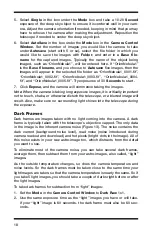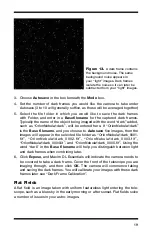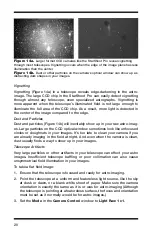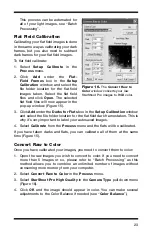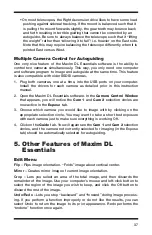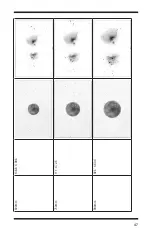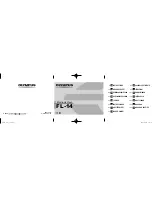
32
superior due to the elimination of extra readout noise and the residual blurring
caused in realigning the images.
When taking long exposures with astronomical telescopes, motorized tracking
is required to compensate for the Earth’s rotation. Most telescope mounts do
not track accurately enough for long-exposure imaging without some form of
additional “guiding”. Manual guiding can be done by an observer watching a
star (“guide star”) through a telescope (“guide scope”) mounted next to the
main imaging telescope (on the same mount). The observer makes manual
corrections to the motor drives via a pushbutton hand controller to keep the
star centered in the guide scope’s eyepiece over time. In this way the track-
ing accuracy of the main telescope (with imaging camera attached) can be
assured. Stars in the resultant images will be crisp and round. Manual guiding
Figure 22.
The
Guide
tab in the
Camera Control
Window
is where
the StarShoot
Pro’s autoguider
functions can be
accessed.
Figure 23.
The autoguider
Settings
window
is where the
Autoguider
Output
is defined.

